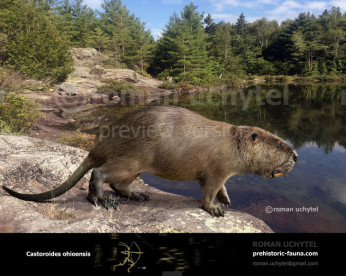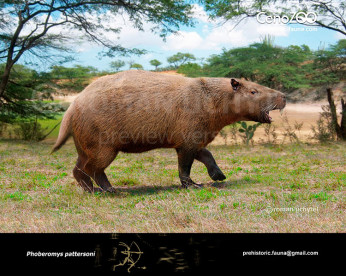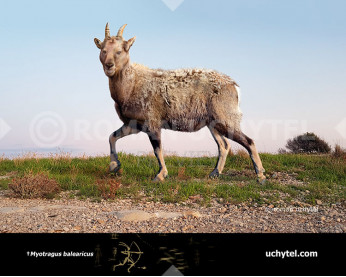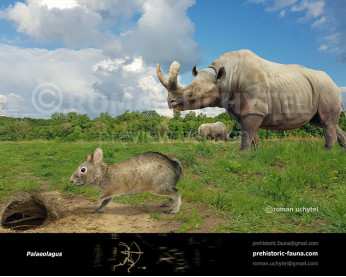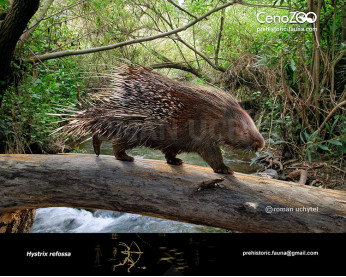Nuralagus rex (Minorcan giant rabbit)
3434Nuralagus rex (Nuralagus Quintana et al., 2011)
Order: Lagomorpha
Family: Leporidae
Time period: Late Miocene - Middle Pliocene of Majorca and Minorca (5 to 3 million years ago)
Size: 60 cm in length, 30 cm in height, 14 - 20 kg of weight
Typical representative: Nuralagus rex Quintana et al., 2011
The Minorcan giant lagomorph, Nuralagus rex, is an extinct rabbit that lived in the island of Minorca from the Messinian until around the middle of the Pliocene, when it became extinct (5 to 3 million years ago). During that time, both Majorca and Minorca were united in one large landform, allowing Myotragus balearicus to colonize the Minorcan giant lagomorph's habitat. Fossils have been found of individuals which could have weighed up to 23 kg, although the estimated average body mass of the species is about 12 kg. They had small ears, tiny eyes, short legs and a short, straight and rigid vertebral column, very different from their living relatives.
According to paleontologist Josep Quintana Cardona, N. rex didn't hop much if at all, as evident by its relatively short, stiff spine. No fossil remains of any rabbit eating predators have been found, so it is suggested that the lack of predators meant they didn't have a reason to maintain speed and agility, and could evolve to larger sizes.
Nuralagus rex (Nuralagus Quintana et al., 2011)
Order: Lagomorpha
Family: Leporidae
Time period: Late Miocene - Middle Pliocene of Majorca and Minorca (5 to 3 million years ago)
Size: 60 cm in length, 30 cm in height, 14 - 20 kg of weight
Typical representative: Nuralagus rex Quintana et al., 2011
The Minorcan giant lagomorph, Nuralagus rex, is an extinct rabbit that lived in the island of Minorca from the Messinian until around the middle of the Pliocene, when it became extinct (5 to 3 million years ago). During that time, both Majorca and Minorca were united in one large landform, allowing Myotragus balearicus to colonize the Minorcan giant lagomorph's habitat. Fossils have been found of individuals which could have weighed up to 23 kg, although the estimated average body mass of the species is about 12 kg. They had small ears, tiny eyes, short legs and a short, straight and rigid vertebral column, very different from their living relatives.
According to paleontologist Josep Quintana Cardona, N. rex didn't hop much if at all, as evident by its relatively short, stiff spine. No fossil remains of any rabbit eating predators have been found, so it is suggested that the lack of predators meant they didn't have a reason to maintain speed and agility, and could evolve to larger sizes.

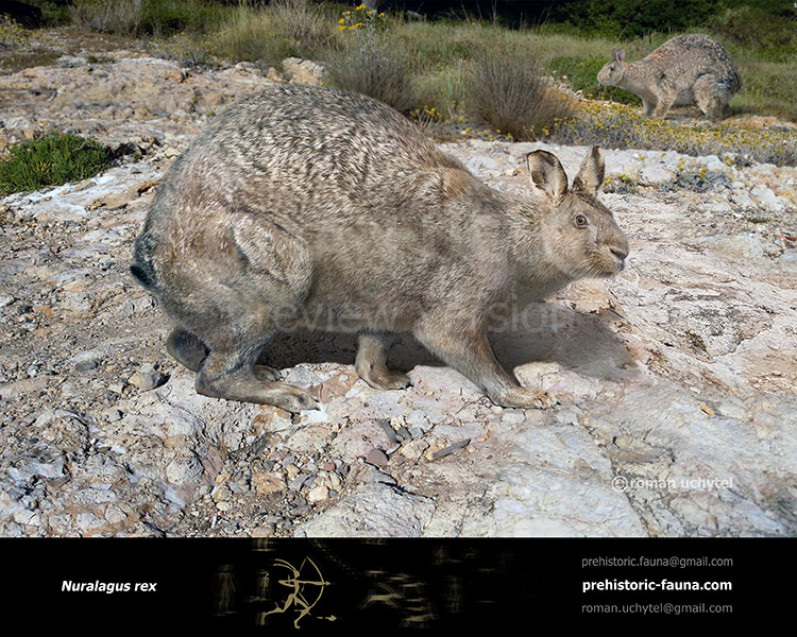
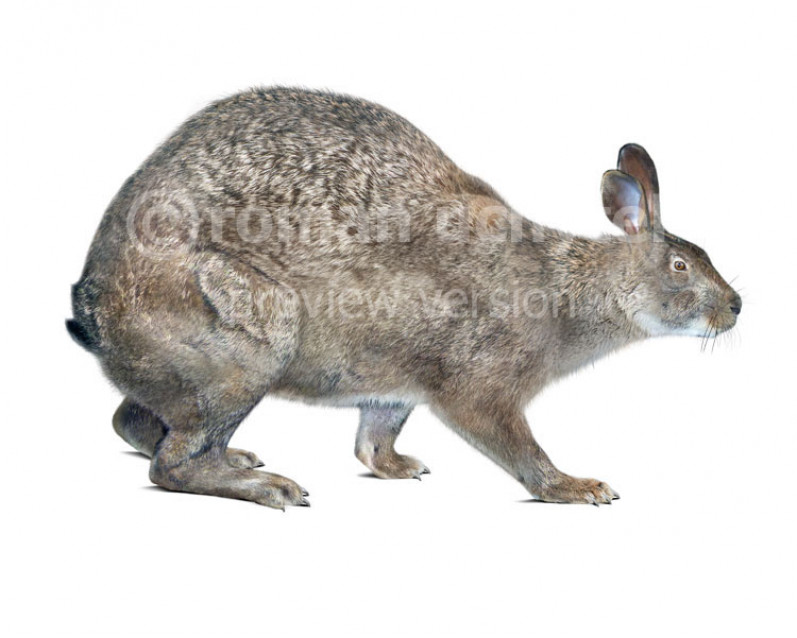
-797x638.jpg)


-70x56.jpg)
